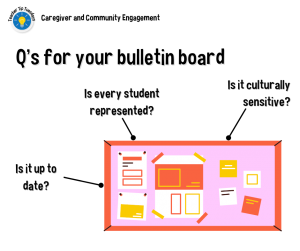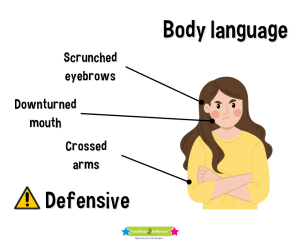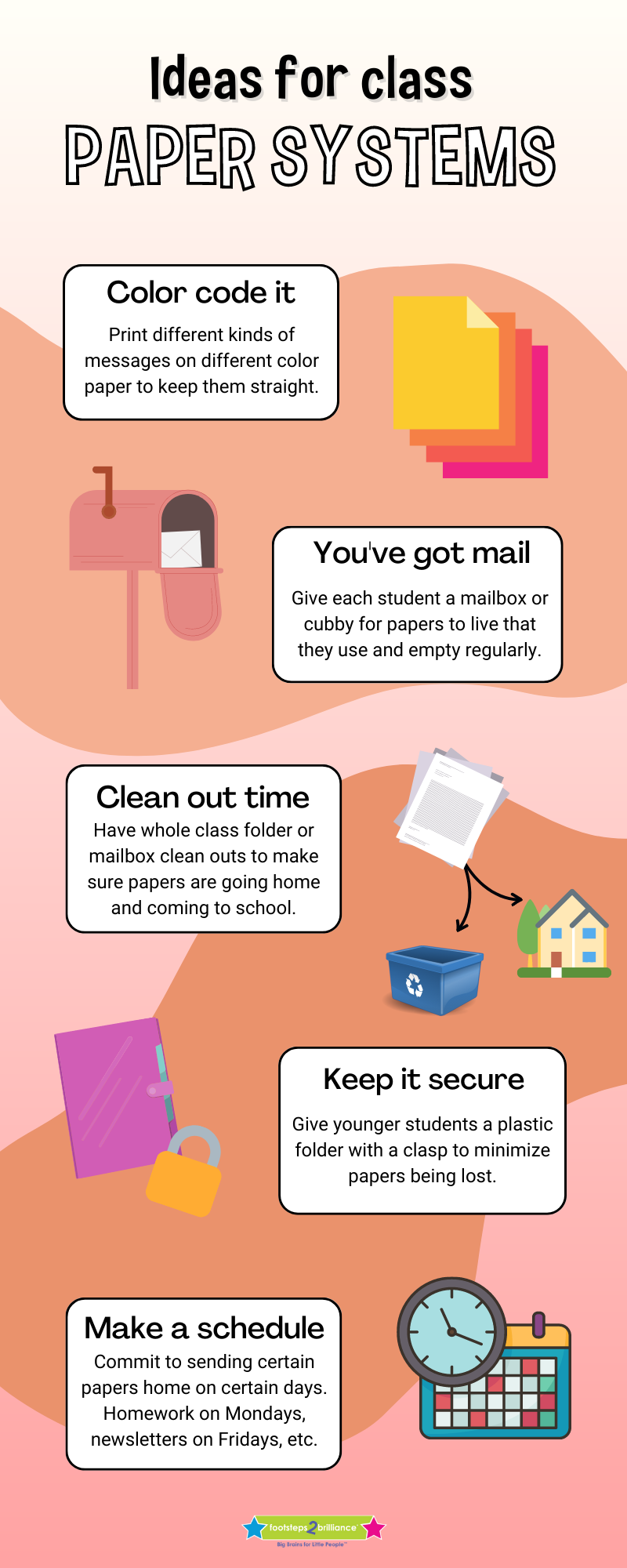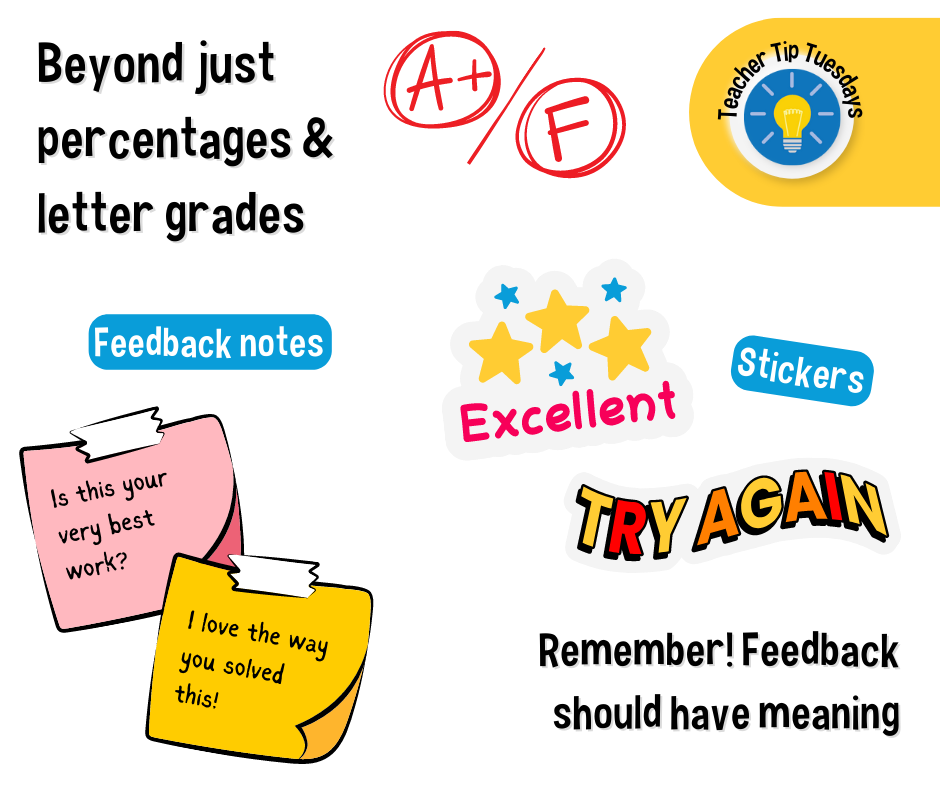
By Carissa Lellos
Last week, we talked about using digital communication tools to build relationships with caregivers. This week we’ll expand into “old school” methods of communication. You’ll be surprised – you are communicating with caregivers without even knowing it! Read on to learn more about harnessing all of the communication tools in your toolbox to be an effective communicator with your students’ caregivers.
Everything is communication, and communication is everything
You can communicate without ever speaking, typing, or even writing. You probably know what crossed arms and scrunched eyebrows communicates, without anyone needing to say a word. Body language, posted classroom signs, and even the way you grade your students’ work are all hidden communications to caregivers that you may be overlooking in your day-to-day teaching. It’s helpful to be conscious of the messages you send, even when you aren’t saying anything. Let’s take a look at the analog methods we use every day to communicate with caregivers.
Remove assumptions about calls home
A call from your child’s teacher can cause a panic, and usually only means something bad. This can put caregivers on the defensive before you’ve even had a chance to address the topic. One great way to combat this response is to sprinkle in calls for the good, not just the bad. For example, if a student who has been struggling with unexpected behavior has an on-task, regulated, or productive behavioral day, be sure to call home and praise the student. By alerting the student to your positive calls home, you can encourage them to be on their best behavior. A positive call home can be an effective tool in behavior management. The calls don’t have to take a lot of time to go a long way. Having excellent phone etiquette, speaking clearly and slowly, and jotting notes down ahead of time can improve phone calls home, too. You can combine this in-person approach with digital methods by texting a heads up or emailing to schedule a time that’s best for everyone.
Stay organized when sending papers home
Every teacher has a different organization system for sending papers home, because a lot of what goes on in school is not digital. There are paper assignments, notes for caregivers, whole class information, even “way to go” sticky notes that need to go home or come from caregivers back to school. It’s important that, no matter what system you use, you find a way to ensure all important information gets home to caregivers. In my first grade class, we had a weekly supervised folder and mailbox clean out. This helped me see if stacks of papers were building in my students’ folders, hiding any new and important send-homes; it also helped me see if messages from home never made it to my desk. Coworkers of mine would have special color coded systems, where crucial information like field trip forms or time-sensitive invitations were printed on green or pink paper. To find the system that works for you, you may need to do a little trial and error. Keep the age levels of your students in mind and dole out responsibility accordingly. Once your system is established and organized, students and caregivers alike will understand the expectations and this will smooth out the process of sending and receiving papers.
Using assignments and assessments to communicate
What color pen do you use to grade assessments? What stickers or stamps do you use? Have you ever thought about the meanings behind the marks you leave on student work? When I looked at the papers my first-year mentor graded, I noticed something very interesting. Instead of using red pen and marking all the mistakes students made, she used green ink and checked off the correctly done work. She still circled mistakes and gave the assessment a final score, but something about that methodology stood out to me. I imagined a caregiver opening that returned assessment at home and seeing all the “+1s” or checkmarks and feeling a sense of pride for their student. I thought of all the red marks I’d received in school and how I only ever looked for the mistakes in my work and not the things I did well. Something as simple as a pen color, a sticker, or the absence of positive feedback can make a big difference in how the message of student performance is received.
Keeping a collection of student work for conferences
In the younger grades especially, student work piles up quickly. You may have a filing cabinet chock full of collages, graphic organizers, and math packets from every unit this year. It can be completely overwhelming! But what caregivers see at teacher conferences sends a message about what’s important in the classroom, what’s being taught, and how their student is progressing in their skills. Remember to include student choice in this process wherever you can, and wherever it’s appropriate.
Use all the tools at your disposal
Combining digital and analog methods, there are endless ways to communicate with caregivers. Find the systems that work for you and use them to build rapport and relationships – your students will be better for it.
Join us each week as we cover tips and resources for nurturing caregiver-teacher relationships and increasing community engagement.
Looking for more Teacher Tip Tuesday content? Visit https://www.footsteps2brilliance.com/category/teacher-tip-tuesday/
Not signed up? To learn how to provide your class with access to the Footsteps2Brilliance bilingual literacy program, click here, or sign up to speak to a Footsteps2Brilliance expert here.










